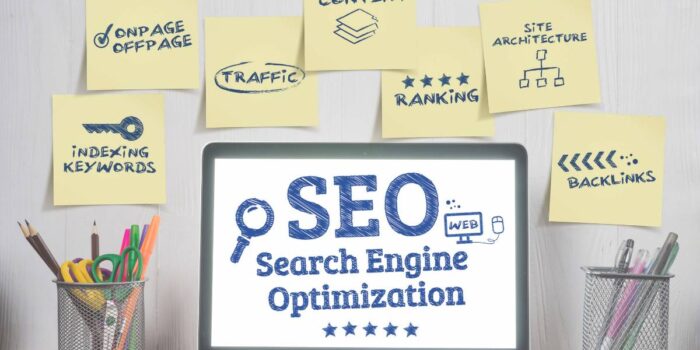Ecommerce SEO is the lifeblood of online retail. It’s not just about ranking high; it’s about attracting the right customers who are ready to buy. This comprehensive checklist goes beyond the basics, offering actionable strategies to optimize your online store for search engines and, more importantly, for people. We’ll cover everything from keyword research and technical SEO to content marketing and link building, providing concrete examples and expert tips along the way.
1. Laying the Foundation: Keyword Research and Search Intent
Before diving into tactics, understand what your target audience is searching for. Effective keyword research is about identifying the terms your customers use and understanding their intent. Are they looking for information, or are they ready to purchase?
- Tools of the Trade: Leverage tools like Ahrefs, SEMrush, and Google Keyword Planner. Don’t just look at search volume; analyze keyword difficulty, competition, and, most importantly, search intent.
- Beyond the Obvious: Don’t just target obvious keywords like “red shoes.” Explore long-tail keywords (e.g., “women’s red running shoes for flat feet”) and question-based keywords (e.g., “how to clean suede red shoes”).
- Competitor Analysis: See what keywords your competitors are ranking for. This can give you valuable insights into what’s working in your niche.
- Categorize Keywords: Organize your keywords by category (e.g., product types, brands, features) to structure your website effectively.
Example: Let’s say you sell athletic wear. Instead of just targeting “running shoes,” you might target “marathon running shoes for women,” “trail running shoes for men,” and “best running shoes for flat feet.” This granular approach targets specific customer needs and increases your chances of ranking for relevant searches.
2. Optimizing Your Online Store for Conversions
Your website is your storefront. Make sure it’s welcoming, easy to navigate, and optimized for conversions.
- Clean and Intuitive Navigation: Make it easy for customers to find what they’re looking for. Use clear categories, filters, and a robust search function.
- Compelling Product Pages: Product pages are where the magic happens. Write unique and persuasive product descriptions that highlight benefits, not just features. Use high-quality images and videos.
- Mobile-First Approach: Ensure your website is fully responsive and provides a seamless experience on all devices. Mobile commerce is booming, so this is crucial.
- Fast Loading Speed: A slow website can kill your conversions. Optimize images, minimize HTTP requests, and leverage caching to improve loading speed. Use tools like Google PageSpeed Insights to identify areas for improvement.
- Secure Checkout Process: Build trust by ensuring a secure checkout process with multiple payment options. Display security badges and clearly communicate your return policy.
Example: Instead of just listing the features of a pair of hiking boots, describe how those features translate into benefits for the customer. For example, “Waterproof membrane keeps your feet dry even in the wettest conditions,” or “Durable Vibram sole provides superior traction on any terrain.”
3. Content Marketing: Attract and Engage Your Audience
Content is king, but valuable content is emperor. Create content that educates, entertains, and solves your customers’ problems.
- Blog Posts: Share your expertise on topics related to your products. For example, if you sell outdoor gear, you could write blog posts about hiking trails, camping tips, or gear reviews.
- Product Guides and How-Tos: Create in-depth guides that help customers choose the right products and use them effectively.
- Videos: Videos are highly engaging. Create product demos, tutorials, or behind-the-scenes glimpses of your brand.
- Infographics: Present data and information in a visually appealing way.
Example: If you sell coffee, you could create a blog post about “The Ultimate Guide to Brewing the Perfect Cup of Coffee,” a video demonstrating different brewing methods, or an infographic about the benefits of fair trade coffee.
4. Building Authority with Backlinks
Backlinks are like votes of confidence from other websites. Earning high-quality backlinks can significantly boost your search rankings.
- Guest Blogging: Contribute articles to relevant industry blogs and include a link back to your website.
- Influencer Marketing: Partner with influencers in your niche to create content that links to your products.
- Resource Link Building: Reach out to websites that curate resources in your industry and ask to be included.
- Broken Link Building: Find broken links on relevant websites and suggest your content as a replacement.
Example: If you sell sustainable clothing, you could reach out to environmental bloggers and offer to write a guest post about the benefits of sustainable fashion.
5. Technical SEO: The Engine Under the Hood
Technical SEO ensures that search engines can easily crawl and index your website.
- XML Sitemap and Robots.txt: Ensure you have a properly configured XML sitemap and robots.txt file to guide search engine crawlers.
- Schema Markup: Implement schema markup to provide search engines with more information about your products and website.
- HTTPS: Ensure your website is secure with HTTPS.
- Canonicalization: Use canonical tags to prevent duplicate content issues.
- Mobile-Friendliness: Test your website’s mobile-friendliness with Google’s Mobile-Friendly Test tool.
6. Analytics and Optimization: The Continuous Improvement Cycle
SEO is an ongoing process. Track your progress, analyze your data, and make adjustments as needed.
- Google Analytics: Monitor your website traffic, user behavior, and conversions.
- Google Search Console: Track your website’s performance in search results and identify any technical issues.
- Keyword Tracking: Monitor your keyword rankings to see how your SEO efforts are paying off.
Example: If you notice that your conversion rate is low on a particular product page, analyze the data to see why. Are users dropping off at a certain point in the checkout process? Is the product description unclear? Use this data to make improvements and optimize for conversions.
7. Staying Ahead of the Curve
The world of SEO is constantly changing. Stay up-to-date with the latest trends and algorithm updates by following industry blogs, attending webinars, and participating in online communities.
Key Takeaways for eCommerce SEO Success:
- Focus on User Experience: Provide a seamless and enjoyable shopping experience for your customers.
- Create High-Quality Content: Offer valuable content that educates, entertains, and solves your customers’ problems.
- Build Authority: Earn high-quality backlinks from reputable websites.
- Stay Technical: Ensure your website is technically sound and easy for search engines to crawl and index.
- Analyze and Optimize: Track your progress and make adjustments as needed.
By following this comprehensive checklist and staying committed to ongoing optimization, you can significantly improve your eCommerce SEO performance and drive more traffic and sales to your online store. Remember, SEO is a marathon, not a sprint. Be patient, persistent, and focus on providing value to your customers, and you’ll reap the rewards in the long run.




